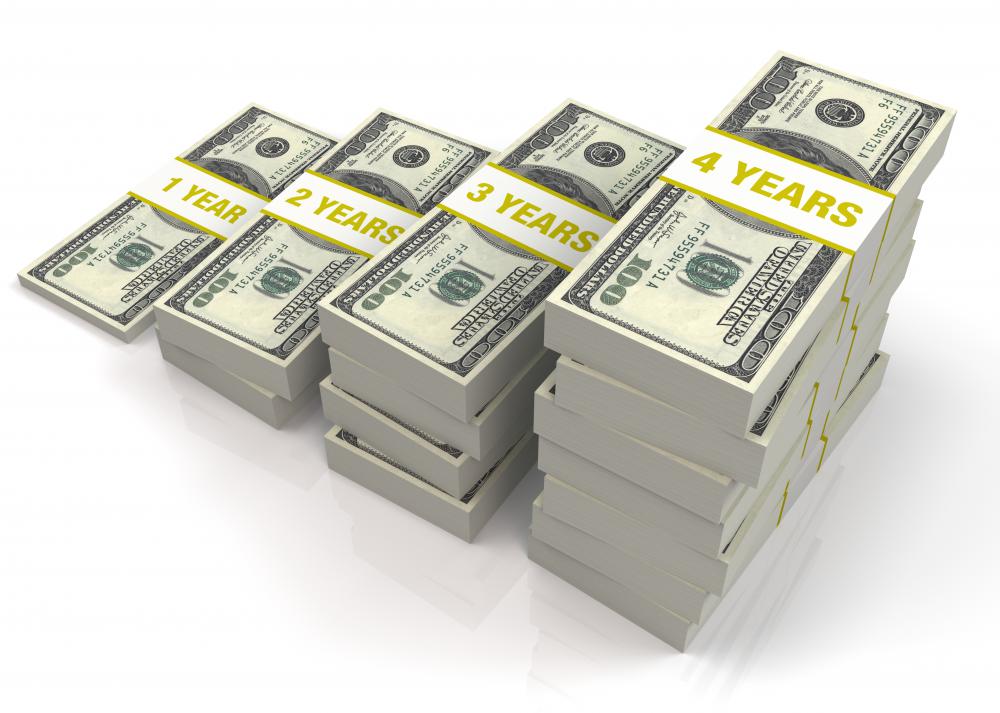At WiseGEEK, we're committed to delivering accurate, trustworthy information. Our expert-authored content is rigorously fact-checked and sourced from credible authorities. Discover how we uphold the highest standards in providing you with reliable knowledge.
What is the Difference Between APR and APY?
An understanding of interest rates is fundamental to a person's ability to manage both debt and savings effectively. Annual percentage rate (APR) and annual percentage yield (APY) are two different ways of advertising the interest rates paid on borrowed money and time deposits, respectively. The difference between the two is mostly a matter of perspective, but certain mathematical nuances should be noted as well.
APR is the interest rate that we most often look for when we need to borrow money. This is especially the case with mortgages, since a small difference in APR can make a large difference in the monthly payment, and therefore the money paid over the lifetime of the loan. A borrower will generally choose the lowest APR he can find when looking for a mortgage, an auto loan, or a credit card, and this is a good thing to do.

APR does not quite tell the whole story, however, since it is the advertised interest rate, and can be somewhat misleading. For example, mortgage loans are usually compounded on a monthly basis. If a person takes out a mortgage loan with an APR of seven percent, then the effective interest rate on the loan -- the rate actually paid by the borrower -- is actually 7.23%.
As advertised, APR does not take into account the effect of compounding. In a statement usually attributed to Albert Einstein, it was said that compound interest is the most powerful force in the universe. This statement, while perhaps a slight exaggeration, still makes the point that the difference between APR and the effective interest rate can be very important.
On the other side of the coin is APY, the interest rate paid to a bank customer with a time deposit account, such as a certificate of deposit (CD). First, APY is different because of the different perspective, namely that of a lender. When a person opens a CD at a bank or credit union, he is actually lending money to the institution, for which he is paid back in interest. The APY is the interest rate advertised on the account, and represents the actual amount paid to the depositor, this time taking compounding into account.
When someone is looking for a high yield on a time deposit account, he basically just needs to look for the highest APY he can find with a time frame that suits him. Assuming that monthly interest payments on a CD go right back into the account, APY is the accurate measure of the depositor's return on investment. Unlike APR, APY does tell an accurate story as far as actual interest is concerned. Often not quoted, though, is the original interest rate that the CD offers. For example, the interest rate on a CD, ignoring compounding, might be five percent, but if the balance is compounded monthly, the effective interest rate -- the APY -- is 5.11%.
AS FEATURED ON:
AS FEATURED ON:











Discussion Comments
Sunshine31- Sometimes the credit card APY can be confusing. Usually there is an annual percentage interest rate, but your interest actually accrues daily, so you could end up paying even more.
It is best to look at a financial calculator online in order to calculate APY exactly. The best APY offer the highest yields and they are usually found in internet banks or credit unions.
You can find the best rates on Bankrate. It is a great site for anything financial and could point you in the right direction in terms of the best APY savings products available on the market.
An APY calculator is used to determine the annual percentage yield for a product such as CD or a certificate of deposit as well as the APY in savings accounts, a checking account APY and a money market APY.
In order to calculate APY the bank uses compounded interest which means that the interest accrues daily.
The overall banking averages can be found on Bankrate. They state that the average savings statement rates have an APY of .17%, while the APR or average percentage rate was .17%.
It also demonstrated that a thrift type of bank offered about four times what the larger banks offered in terms of annual percentage yield.
For example, the regular banks offered an APY of .07 while the thrifts offered .28%. These are average daily savings APY.
Post your comments